I saw a short pictorial review done by Ewan Macintosh yesterday, and it seemed like a good way to bring 2007 to a close. Little did I know how hard it would be to pick just the right shots from 2,074 pictures in my iPhoto from the last 12 months. So scroll through quickly if you have only a few minutes.
| It started with Brenda and I taking a trip to Lake Waccamaw, in eastern North Carolina — nesting sight for the great Canadian Swans. It was a magnificent trip, where we both got lots of shots and I got a chance to try out my new telephoto lens.Below is an early morning sun rise from the pier just in front of the small house we rented in Beaufort for the rest of the week. I’m not sure I cracked the lid of my laptop more than three times the entire trip.
I can tell already that this is going to be tough, pulling out just the very small handful of photos that define the year for me. |
 |
 |
| Jeff Utecht and I recording a podcast at the Shanghai American School. It was a fantastic week of working with international school educators, and getting a taste of the future, China. We had lots of meetings, a few workshops, and the week culminated with what was probably the precursor to the Learning 2.0 conference, which occurred about six months later. |
 |
| Shanghai was quite a place to visit. I took the picture to the right the last day (evening) that I was in the city. Me and two art teachers, a tech person and her husband, a business student from Japan spent the evening eating, watching an amazing cultural dance show, walking in the Bund, and trying some exotic drinks that you can’t get in the U.S. |
 |
| Only a few days and about 20,000 miles later, I’m having dinner with new friends in New Zealand. I spoke at their educators conference in Rotorua and then traveled down to the South Island to Dunedin for a day-long workshop. Many newer friends and a day of walking around town taking lots of pictures. I also got to see my first Rugby game.This was one of several opportunities that I had, during 2007, to see what educators can do with these emerging new tools, when they have permission to just “do it!†|
 |
| I was in Fredericton, New Brunswick, Canada twice in 2007, making lots of new friends. Just like New Zealand, it was a charge to present my ideas to educators who could actually run with it. I could see in their faces, that they were working out how to make this work in their classrooms, rather than how they might get permission to make this work.I also spent a day with my friend Jeff Whipple, who took me to his uncle’s maple syrup farm. Great fun, and I got to take some home with me. The security folks at the Fredericton airport were just great. |
 |
| It was around this time that we discovered a small herd of deer who live in our neighborhood. We are not inner city, but its several miles out, before you get to anything that resembles wilderness. There are a lot of trees and parks in Raleigh. It’s one of the best things about this city, that we have fought to keep, despite efforts to make it easier for developers to do their thing without regard to aesthetics. |
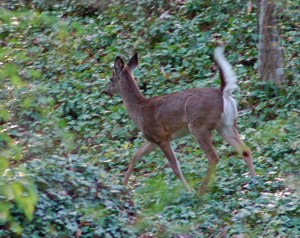 |
| I played one gig with some of the folks I use to play music with when I was in high school. One brought this photo that we all posed for in 1969. I’m the tall one to the left. My mom made that shirt for me. |
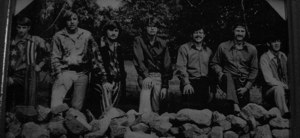 |
| This was a wonderful day in Toronto, with the approaching spring. I worked with the Ontario Library Association to brainstorm about a new set of instructional standards for school libraries. The Ministry of Education wants the school libraries to take the lead in moving schools toward 21st century teaching and learning. |
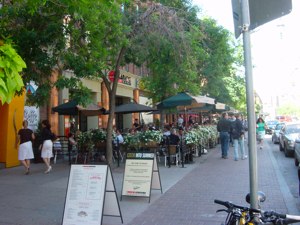 |
| From Toronto, I flew to Boston to meet Brenda and Martin for a couple of days of doing the history thing. It was a lot of walking and some great food and the sort of thing that Brenda and I will likely be doing more of. She’s going with me to the UK in March and likely to Vancouver later on in the year. She knows way more about English history than I do. |
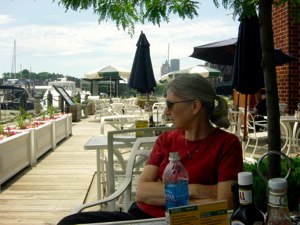 |
| Then came NECC in Atlanta. Here’s David Jakes delivering the keynote address at this national conference. Actually, we both got there early, and staged this shot. He looks like a natural, don’t ‘e.It’s difficult to say what the high point of this conference was, without seeming to disapprove, in some way, of other aspects. NECC 2007 was, hands down, the best National event I have ever attended. You could hardly turn around without bumping into some opportunity to learn something new. The sessions and keynotes were great, and the in-the-hall opportunities were phenomenal. |
 |
| Certainly, one of the best things about NECC2007 was the EduBloggerCon [photos], organized by Steve Hargadon. It was a day of conversations among practitioners who all had something to teach and all had much to learn. This was learning 2.0. |
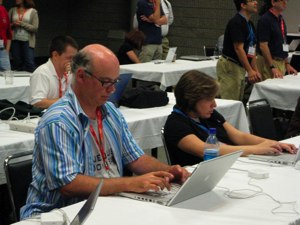 |
| This was one of the presentations I did at NECC, talking about the fundamental characteristics of Web 2.0 and its pivot points of opportunities for education. The audience was state level directors of technology, the State Education Technology Directors Association (SETDA). |
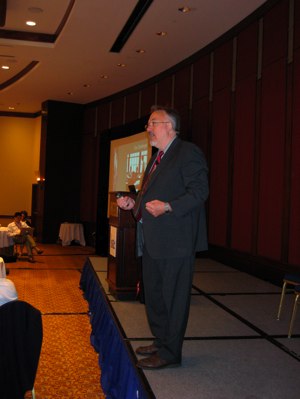 |
| Here is one motley crew of educators — at the end of the NECC conference. We were asked to share some reflections about the event. I had just finished my spotlight address and had completely forgotten about this webcast. Someone had to come and fetch me. Not at all out of character for me.The folks with me, from left to right are Steve Hargadon, Will Richardson, me, and Chris Walsh. You can see the web cast here. |
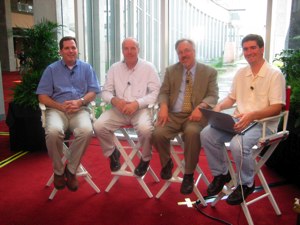 |
| It was shortly after NECC that I finished the 2nd edition of Classroom Blogging. May is always a light month for me and it seems that there is always some big writing project that is begging to be done then. The response from the book has been good, but I was most validated when Brenda told me that “This is a good book. Teachers should read this book.†|
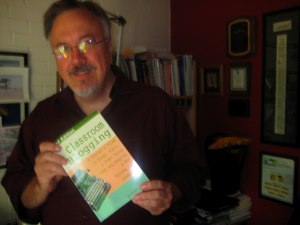 |
| During every year, since I have gotten involved in education and technology, I have witnessed lots of highlights. But certainly, for 2007, one of the greatest of these was the Games, Learning, and Society conference in Madison, Wisconsin. I learned more about the future o education here than any other event all year. In this picture, we’re all sitting around a fire (digital) and discussing education and video games with Dr. Henry Jenkins of MIT.One thing that impressed me here was that most of the presenters looked like they were 17 years old. Yet, they were all fantastic, entertaining, knowledgeable, and committed speakers. I learned so much! |
 |
| Another highlight was the two times that I got to speak at the same conference with Daniel Pink, author of The Free Agent Nation and A Whole New Mind — both books are about me. This was the New Jersey ELITE conference for education administrators from across the state. |
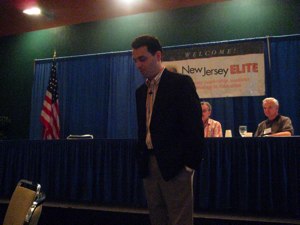 |
| The second time I got to work with Daniel Pink was at the Council for Chief State School Officers in Portland Maine. It was an exciting conference, but the best pictures came from a series I took of some youngsters who were skateboarding down a hill in downtown Portland with special gloves. Great fun, and a wonderful city. Brenda met me here and we both fell in love, wishing we’d stayed here rather than going up to Bar Harbor — which disappointed us both. |
 |
| Back in Fredericton, New Brunswick, I got to see Sharon Peters again where she spoke to a packed house about Web 2.0. She is so smart and also very relaxed. She tried to teach me a little French — which I bungled during my keynote. |
 |
| Intermixed among these highlights were lots of gigs (lots of gigs) that all contributed to the buzz that was 2007. Lots of presentations and lots of conversations — lots of learning. But this one stands out, because of this very tech savvy educator in Kinston, North Carolina, who, after I showed pictures of my avatar in Second Life, proceeded to set up her account and move into EduIsland before I finished my presentation.It took me three months to get off of orientation island. |
 |
| Twice Brenda and I went to New Haven, Connecticut, flying into NYC, and taking the train up to this very beautiful town. Brenda wondered the town, reading at coffeeshops and exploring the shops while I drove off to neighboring towns to do my presentations.Our hotel was right on the edge of Yale Universities Campus, so the atmosphere was right down our alley, with lots of ethnic restaurants, and some of the best pizza we’ve ever eaten. |
 |
| This is a magnet school in Los Vegas and you see, here, the science department. The school is virtual, and the teachers teach from these cubicles, reaching out to students all over the county and beyond. It intrigued me that this type of teaching would have seemed impossible to even imagine when I graduated from college. |
 |
| Another high point was watching my friend, Joe Brennan, present about digital video and digital storytelling in Pennsylvania. He is a talented presenter and the entire audience was captivated the whole time. And Joe really is that tall! |
 |
| During one of the rare weekends that I was at home during the fall, Brenda and I went on a tour of gardens in Raleigh. We felt so much like my grandparents. Made me want to retire. 😉 |
 |
| I took this quick shot while preparing to do one of the scenes from my 2007 K12Online conference keynote. I made it no secret that this is a hard thing for me to do, to work before a camera, especially when it’s my camera. But the chat that ensued during the first 24 hours of the conference as people where watching the keynote was incredible to me. It was like being able to watch my own presentation through the eyes of others and engage in conversation with them — all at the same virtual time. |
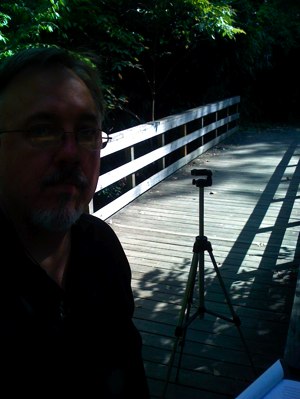 |
| After one of our trips to New Haven, Brenda and I met my youngest brother, Dennis, in Manhattan, where we took in a play. It was supposed to be a fun play about Rock’n’Roll, but turned out to be very serious and a great play. I got some great pictures of the very old and stately theater in side, but this one captured the moment. |
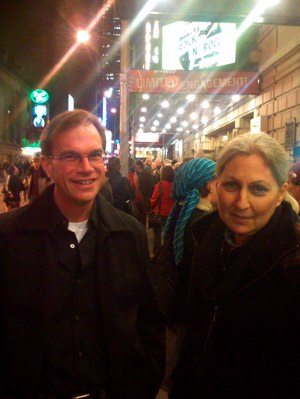 |
|
|
All in all, it was a good year during which we saw some issues that had been emerging of the past few years, start to mature in some interesting ways. Maturing is not always fun, but it is what we work toward, and it is work.
 That was the opening paragraph from an article that appeared in today’s Raleigh News & Observer, attributed to Anick Jesdanun of The Associated Press. According to the article, 21% of Americans between the ages of 18 and 30 have turned to their public libraries for information, as opposed to only 12% of the general adult population.
That was the opening paragraph from an article that appeared in today’s Raleigh News & Observer, attributed to Anick Jesdanun of The Associated Press. According to the article, 21% of Americans between the ages of 18 and 30 have turned to their public libraries for information, as opposed to only 12% of the general adult population. 


























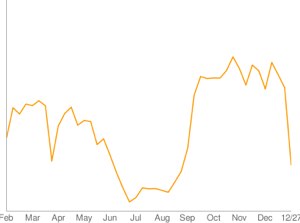
 It looks like a somewhat sleeker version of the Etch-A-Sketch I got for Christmas when I was somewhat less than 10 years old. This puppy, however, sports bott T-DMB and S-DMB, displaying at an astounding 800 X 480 resolution LCD, a SiRFstarIII GPS chipset and two 1.5-watt speakers — and absolutely no aluminum powder.
It looks like a somewhat sleeker version of the Etch-A-Sketch I got for Christmas when I was somewhat less than 10 years old. This puppy, however, sports bott T-DMB and S-DMB, displaying at an astounding 800 X 480 resolution LCD, a SiRFstarIII GPS chipset and two 1.5-watt speakers — and absolutely no aluminum powder. …pitted the monkey math team of Boxer and Feinstein — two female macaque monkeys named for U.S. senators
…pitted the monkey math team of Boxer and Feinstein — two female macaque monkeys named for U.S. senators 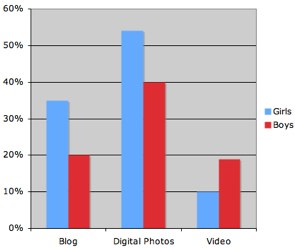
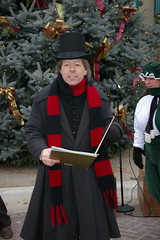 Internet Archive: Details: Twas the Night Before Christmas
Internet Archive: Details: Twas the Night Before Christmas Just finished a very cold mile walk (23f/-5c) to the coffee shop where, after warming my hads around a tall decaf, I’m writing about tag clouds. In looking for examples, I ran across
Just finished a very cold mile walk (23f/-5c) to the coffee shop where, after warming my hads around a tall decaf, I’m writing about tag clouds. In looking for examples, I ran across